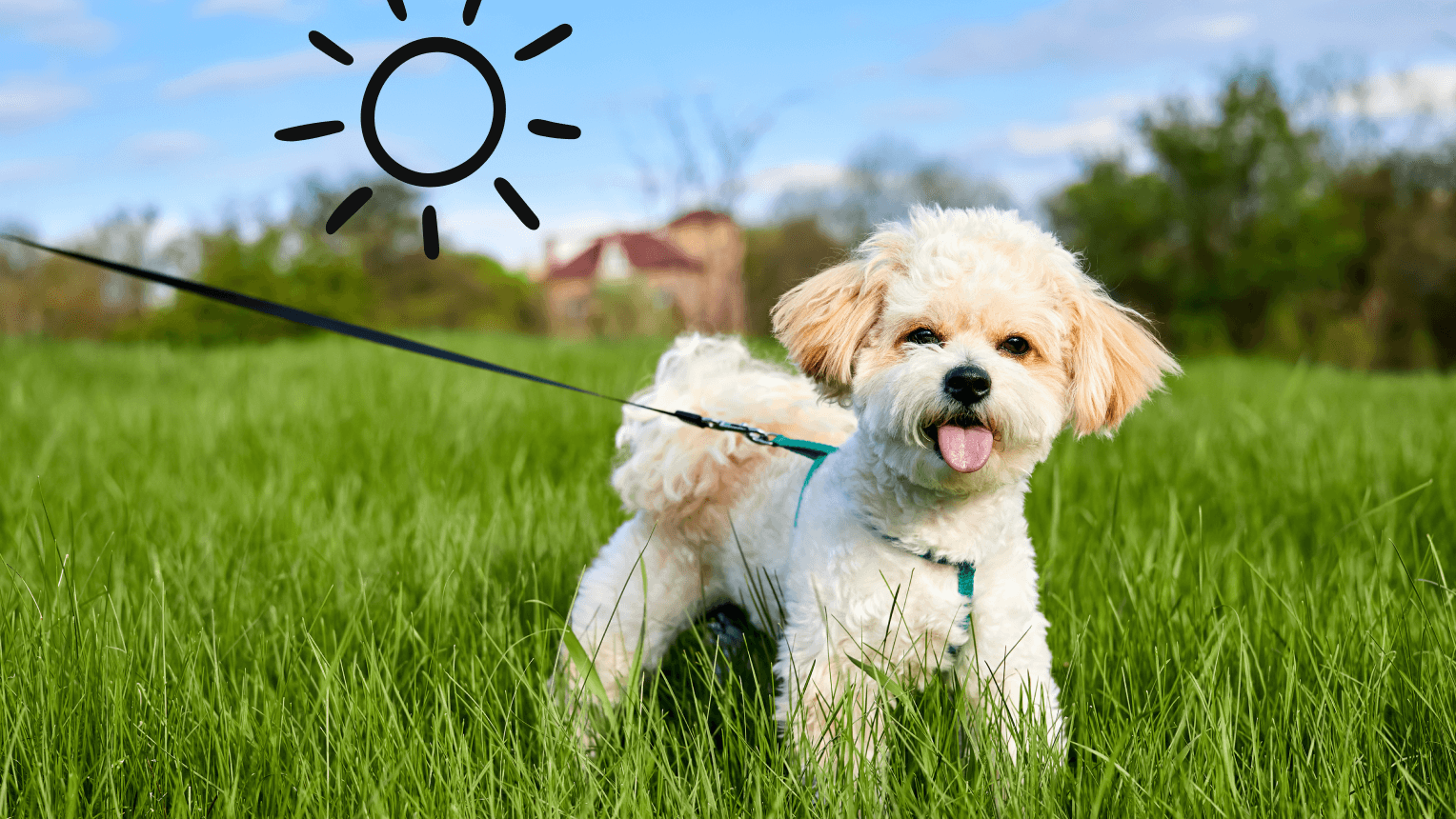When is it too hot to walk your dog?

Summary
Most cases of heatstroke in dogs are caused by exercise in the heat, so it can be too hot for walkies.
We’ve all had days where it’s too hot to be comfortable, let alone while exercising. The same’s true for our furry friends, especially dogs who are prone to heat exhaustion and heat stroke. Most of us know “dogs die in hot cars”, but it’s actually exercising in the heat that causes most heat-related vet trips. So when is it too hot to walk your dog?
When is it too hot to walk your dog?
It’s generally safe up to 19°C (68°F), but exercise caution as temperatures rise. Even at 20°C (70°F), dogs can be at risk of heat stroke.
However, how hot is too hot to walk a dog will vary on other external factors like humidity, and pet-related ones like your dog’s age and breed.
What dogs are more at risk in the heat?
If there’s higher humidity, there’s a higher risk of heat exhaustion.
Meanwhile, some dogs are more at risk of heat stroke, so it takes a lower temperature to cause harm. For example, brachycephalic dogs, or flat-faced breeds, like Pugs and Frenchies struggle to regulate their body temperature because their shorter snouts mean less hot air evaporates off their tongue to cool them.
Overweight and obese dogs are also at greater risk, as are young puppies and older dogs.
Finally, dogs with thick double coats can struggle in the heat. Think of pups like Huskies, that were bred to live in harsh, cold weathers. Their thick double coat traps heat in, and makes them prone to heat exhaustion.
How to stay safe when walking dogs in hot weather
- Avoid walking your dog during the hottest part of the day (usually 11am to 3pm)
- Stick to shady areas and avoid direct sunlight
- Always bring water for you and your dog
- If it’s too hot to keep your hand or bare foot on the ground for 5 seconds, it’s too hot for your dog’s paw pads. Wait until the ground has cooled down!
- Keep walks short, or consider indoor exercise
- Take as many breaks in shady, cool spots as your dog needs
- Watch for any signs of heat exhaustion, and take action if you see any
When your dog is active in hot weather, it's vital you can recognise the signs of heat exhaustion. Heatstroke poses a life-threatening emergency, so if you see any of the symptoms listed below, contact your vet or the emergency vet right away.
Signs your dog has heat exhaustion
Louisa the vet talks in detail about the signs of heat exhaustion in pets, and how to keep your pet safe. But to recap, here are some common signs of heat exhaustion.
- Excessive panting or they can’t stop panting
- Difficulty breathing
- High heart rate
- Foaming at the mouth
- Tremors
- Bright red gums
- Episodes of vomiting and diarrhea
- Leg weakness
- Collapse
- Disorientation
- Seizures
Ignoring these signs could escalate into a more severe condition such as heatstroke, which is a medical emergency for dogs. So if you think your dog might be suffering heat exhaustion, call your vet right away.
What should I do if my dog shows signs of heat exhaustion?
Step 1. Move your dog indoors to a cool room or shaded area
Step 2: Start cooling them off.
-
Gradually pour cold water (using tap water) over their body, gently to avoid causing distress. Make sure no water goes in their nose or mouth.
-
Improve ventilation by opening doors and windows or using a fan/air conditioner.
-
Offer cold water for drinking, but refrain from forcing them if they decline.
-
Place them on a cool, damp towel.
-
Wrap an ice pack or frozen vegetables in a towel and place it between their thighs (for small dogs, place them on top).
Avoid holding or covering them with a wet towel, as this will actually make them even hotter.
Step 3: Contact your vet or emergency vet
-
Ideally, take your dog to the nearest vet clinic.
-
Use the air-conditioning or open windows while you travel there (making sure your dog can’t escape).
-
If possible, have someone go with you to continue cooling your dog down on the journey to the vet.
Remember, in the summer months or anytime it’s hot out, it's always better to be safe than sorry, even if it means missing a walk. So stay cool and enjoy the summer with your four-legged friend.
Jump to
Making pet dental care easier with Luna

Making pet dental care easier with Luna
Blog
Napo & Tractive launch partnership offering pet parents free GPS and health devices

Napo & Tractive launch partnership offering pet parents free GPS and health devices
Blog
Why isn’t my cat using the litter tray?

Why isn’t my cat using the litter tray?
By Rachel Rodgers MSc, Head of Training at Napo Pet Insurance
Blog